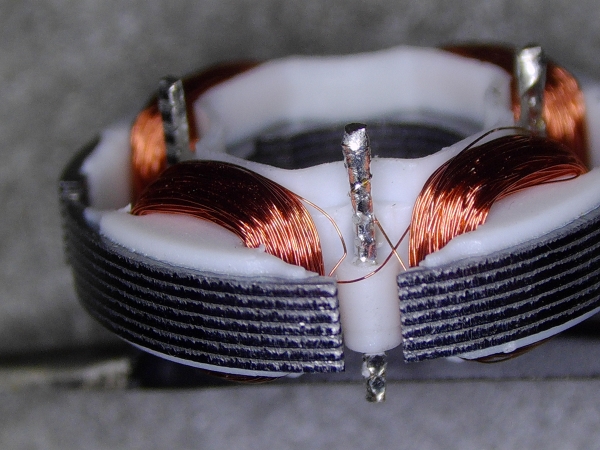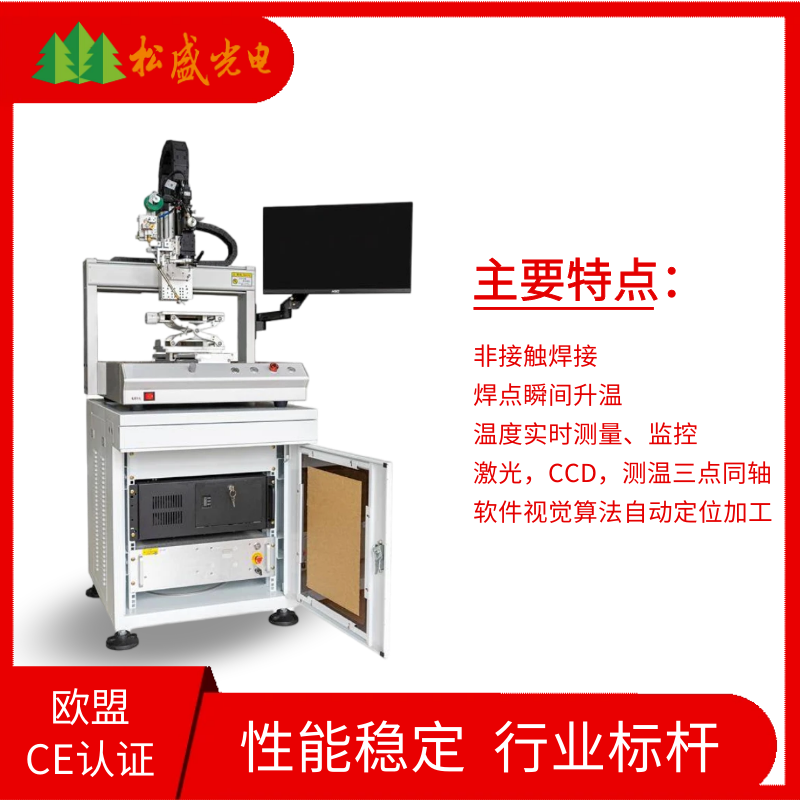Why Doesn't Enameled Wire Bond with Solder? How to Laser Weld It?
Enameled wire, as a key material for motors, automotive electronics, and other products, has long posed welding challenges in the industry. Traditional methods like hand soldering iron and selective wave soldering struggle to ensure both quality and efficiency. In contrast, laser soldering equipment—featuring a "strip-then-solder" process—offers significant advantages such as high speed, zero consumables, and reduced labor costs, making it the ideal solution for enameled wire welding.

Laser-Soldered Enameled Wire Samples for Motor Rotors (With Solder Paste Application)
Enameled wire is a key raw material for products such as motors, motor terminals, automotive electronics, electrical appliances, and household appliances. In recent years, the sustained rapid growth of the power industry and the accelerated development of home appliances have significantly expanded the application fields of enameled wire. In the application of enameled wire in these products, there is one crucial process technology: soldering. This has consequently raised higher requirements for laser soldering machines designed for enameled wire.
Soldering enameled wire has always been a major challenge in the welding industry. The difficulty lies in the fact that the copper wire is coated with an enamel layer. If the temperature is too high, the enamel-coated copper wire may break; if the temperature is too low, the enamel layer will not be properly removed, leading to poor soldering results. How can we ensure that the enamel layer is effectively removed without burning through the copper wire? To address this issue, traditional manual soldering iron methods face significant limitations. Temperature control is extremely difficult and heavily dependent on the operator's experience, resulting in very low yield rates and poor efficiency when using manual soldering irons. Selective wave soldering also struggles to guarantee soldering precision, and its efficiency is only marginally better than manual soldering. In terms of cost-effectiveness, selective wave soldering is not the optimal choice for soldering enameled wire either.
In contrast, for the processing of such products, Songsheng Optoelectronics' laser soldering equipment adopts a process that first removes the enamel coating with laser before soldering. To meet the customer's requirement that the solder height must not exceed 0.3mm, the equipment utilizes a precision direct-drive solder feeder to ensure consistent solder volume and controlled height. With precise temperature control, it guarantees complete copper wire encapsulation and full solder coverage across the entire pad. The welding results are excellent with fast processing speed. Compared to traditional soldering irons and selective wave soldering, its advantages include guaranteed solder height consistency, no consumables, and low labor maintenance costs, making it a highly cost-effective solution for this category of soldering applications.

In the process of laser welding enameled wires, laser stripping stands as an efficient and environmentally friendly technique for removing insulation. By utilizing the high energy density of laser beams, it instantaneously heats the enamel surface to vaporization temperature, causing rapid expansion and detachment of the coating layer. Compared to conventional mechanical stripping and chemical stripping methods, laser stripping offers superior advantages including faster processing speed, more precise stripping results, and complete elimination of pollution.
Reasons for Poor Solder Adhesion on Enameled Wires:
Non-solderable enameled wire was used. If so, the white enamel coating must be scraped off before soldering.
The outer layer of enameled wire contains an oily substance serving as insulation. This layer must be removed (preferably by flame melting to avoid copper damage) for proper solder adhesion.
Insufficient solder temperature prevents enamel melting. Adequate heat will enable proper soldering.
For stubborn cases, pre-treating the wire with rosin flux significantly improves solderability.
Contact: Mr.Xiao
Phone: +86-13385280662
E-mail: market001@whlaser.cn
Add: Room 02, Floor 5, Building 9, Gezhouba Sun City, No. 40, Gaoxin 4th Road, Donghu New Technology Development Zone, Wuhan